
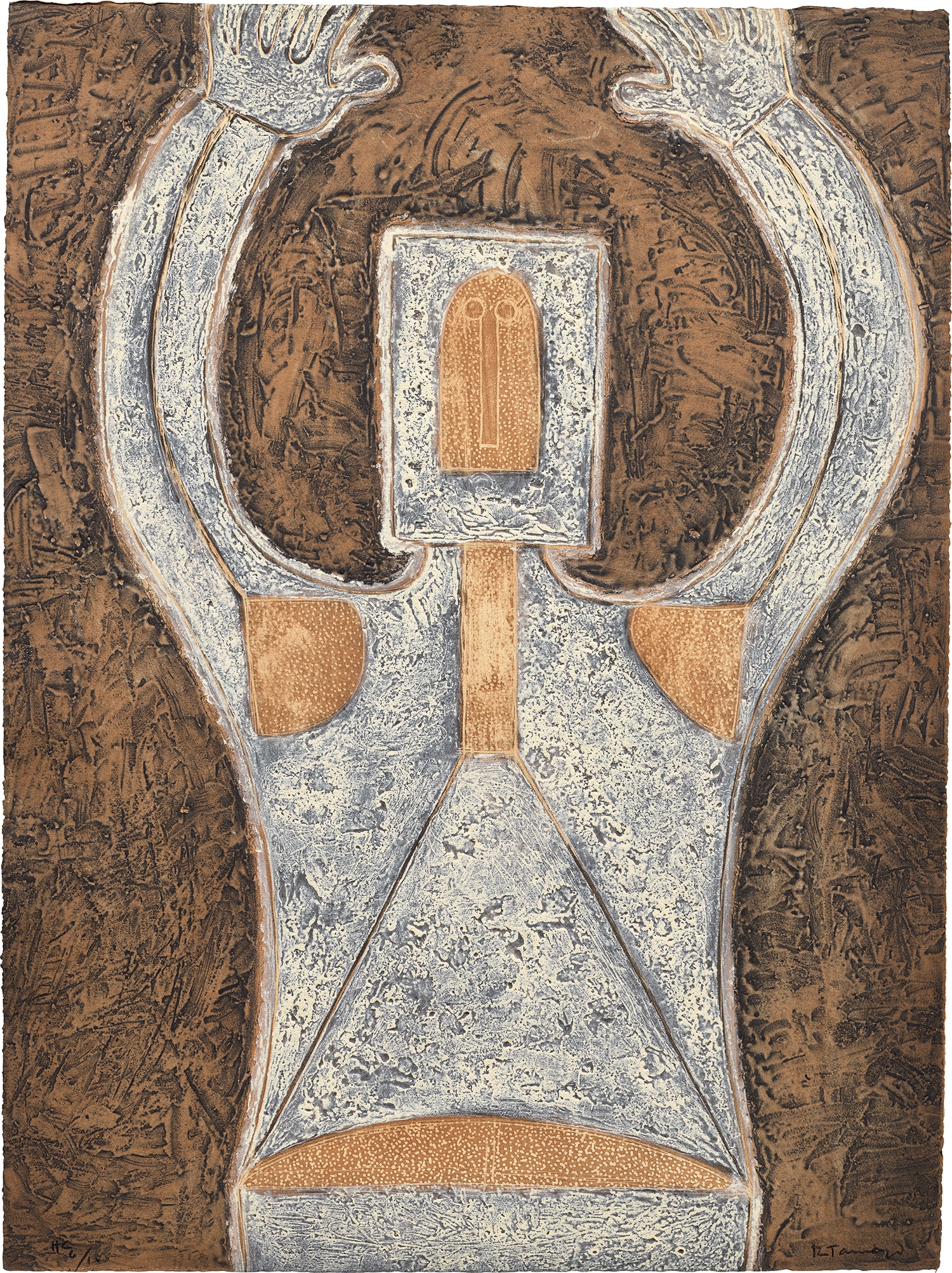
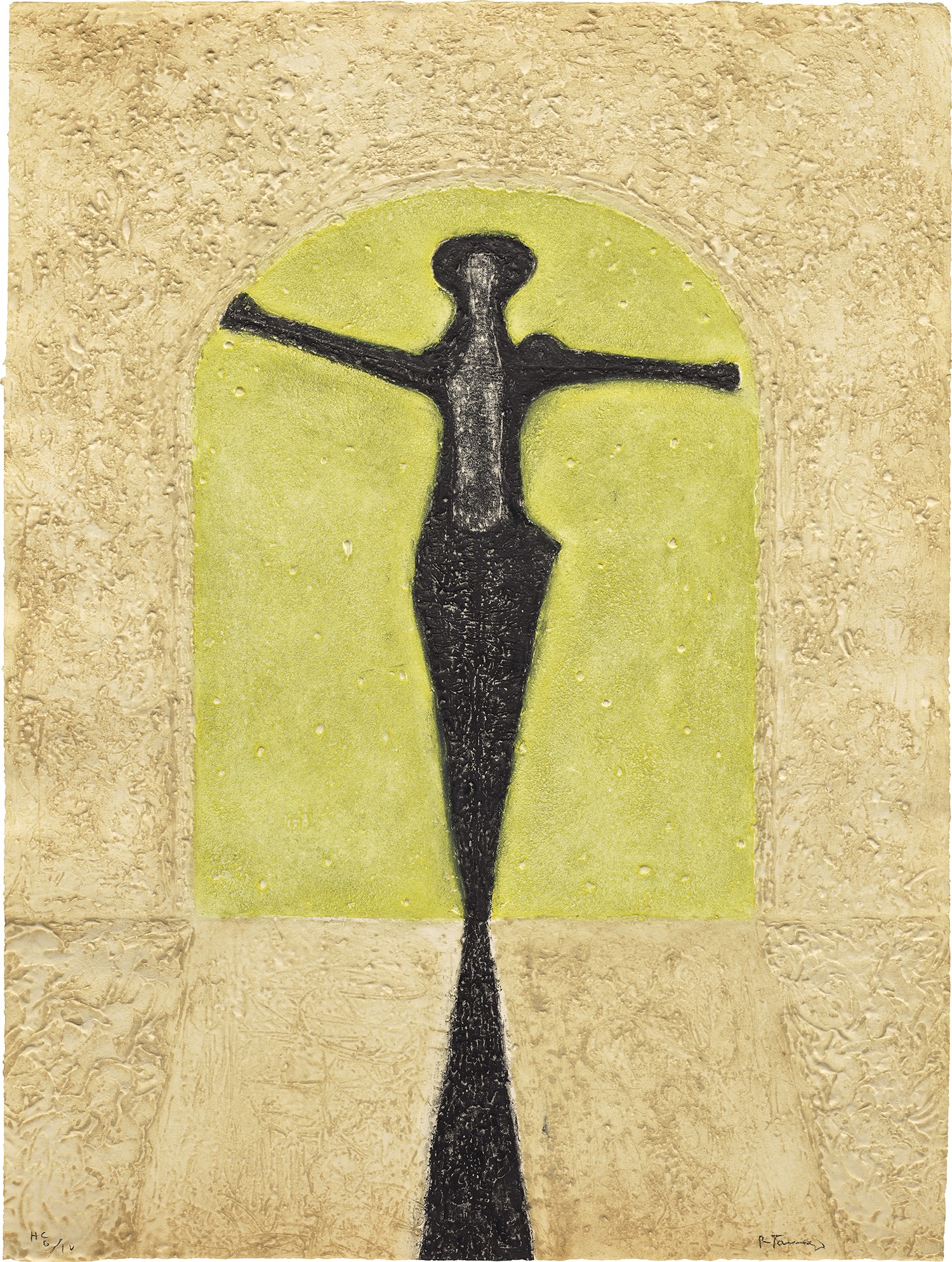
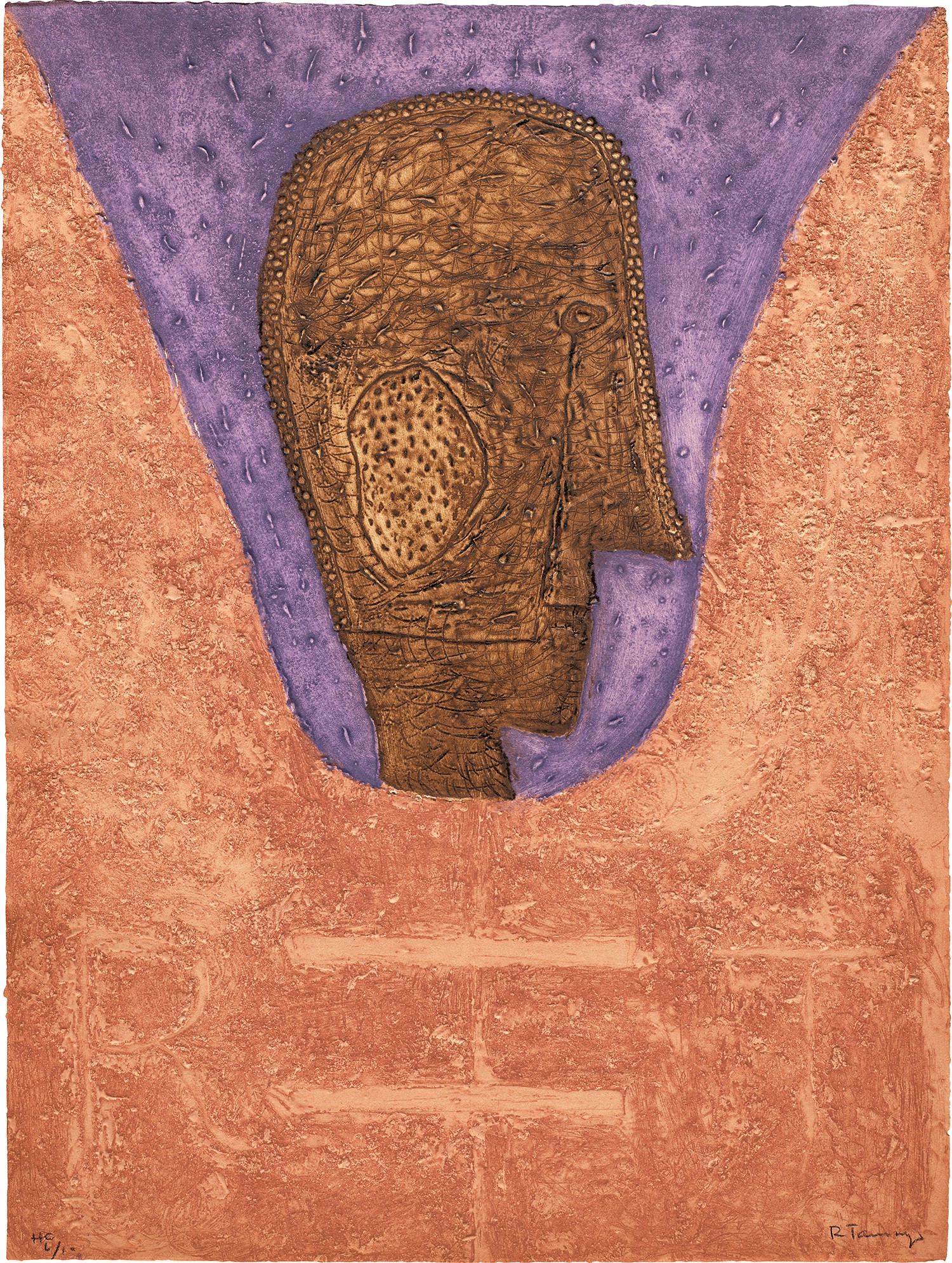

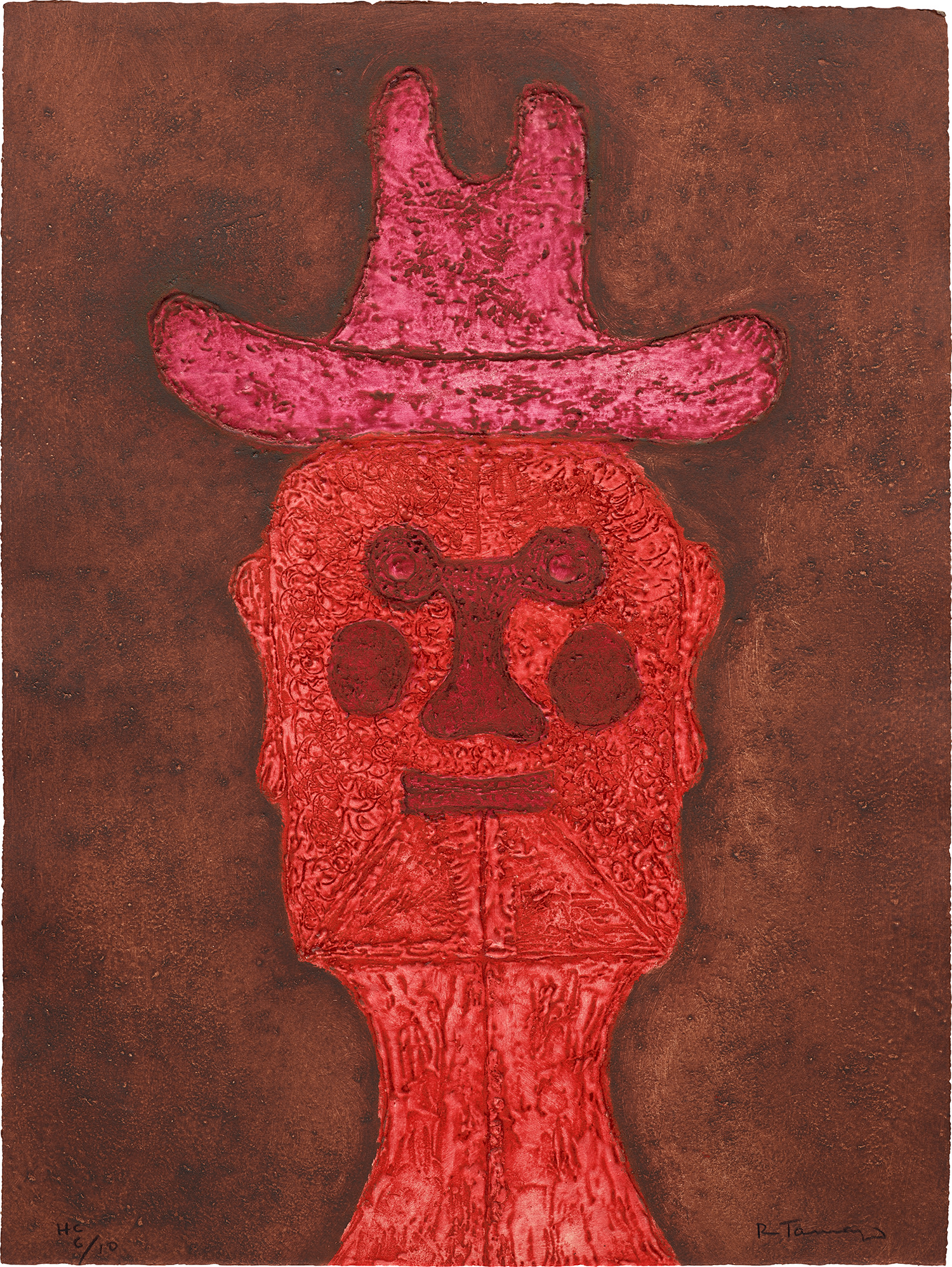
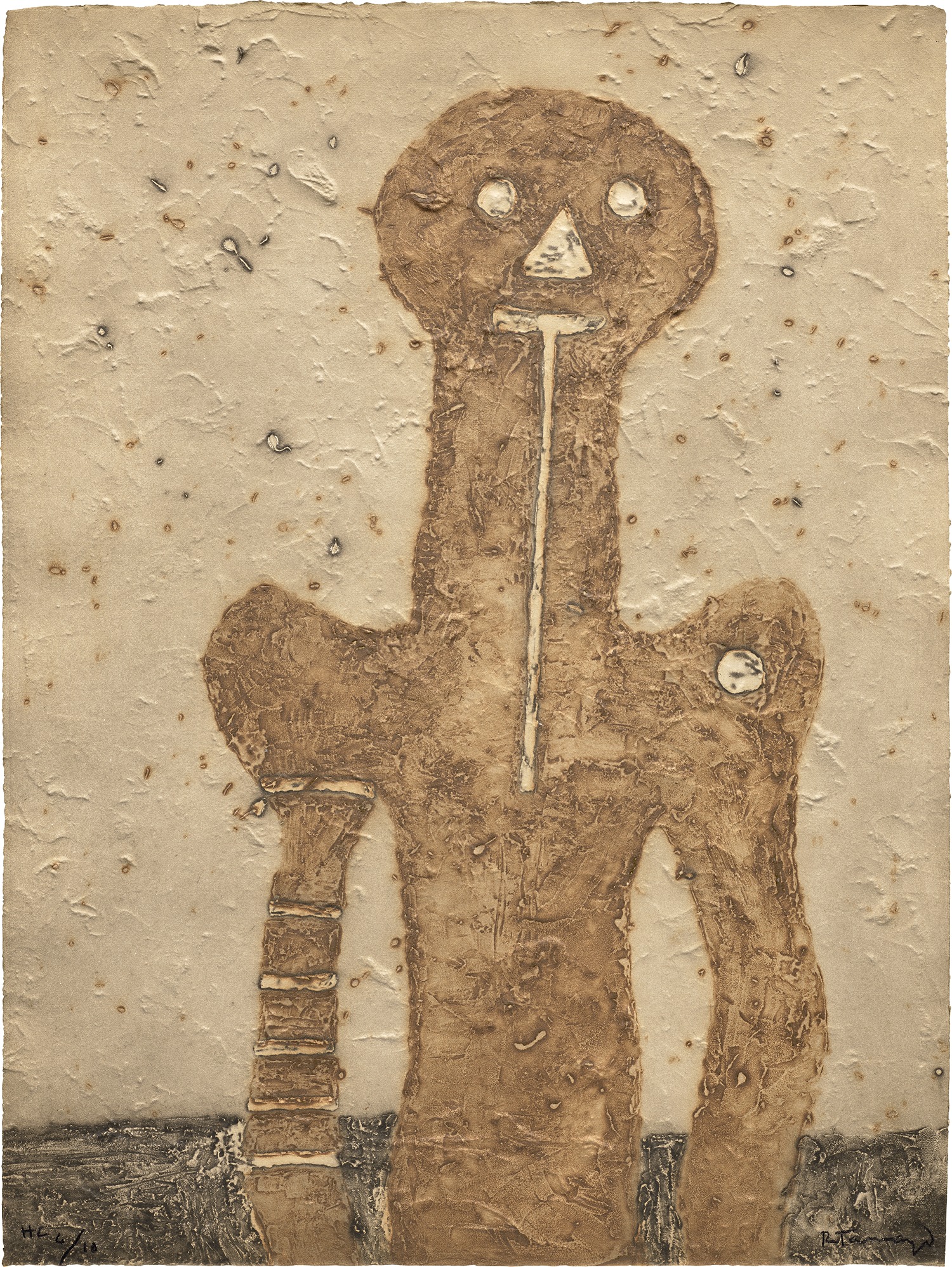




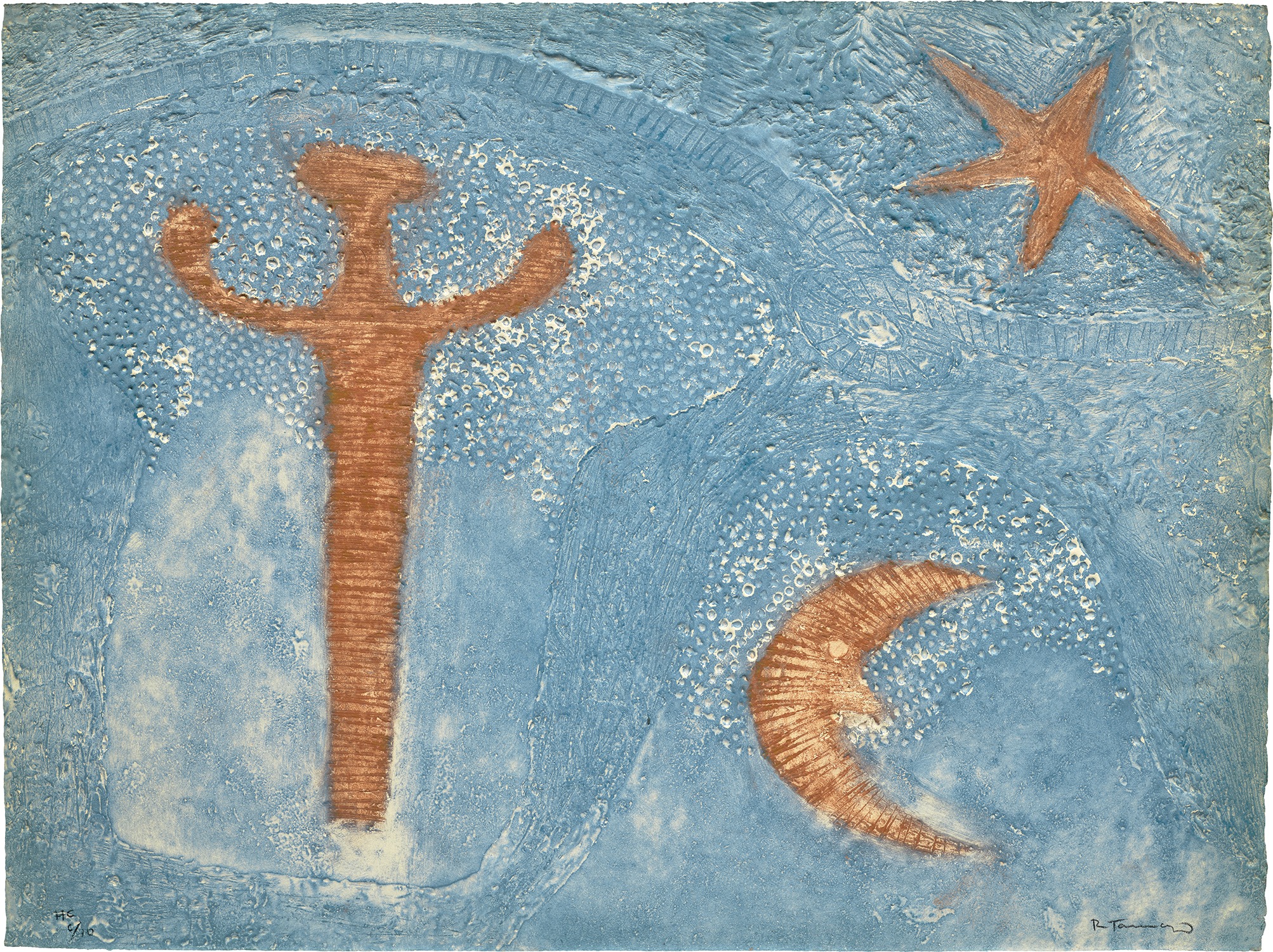
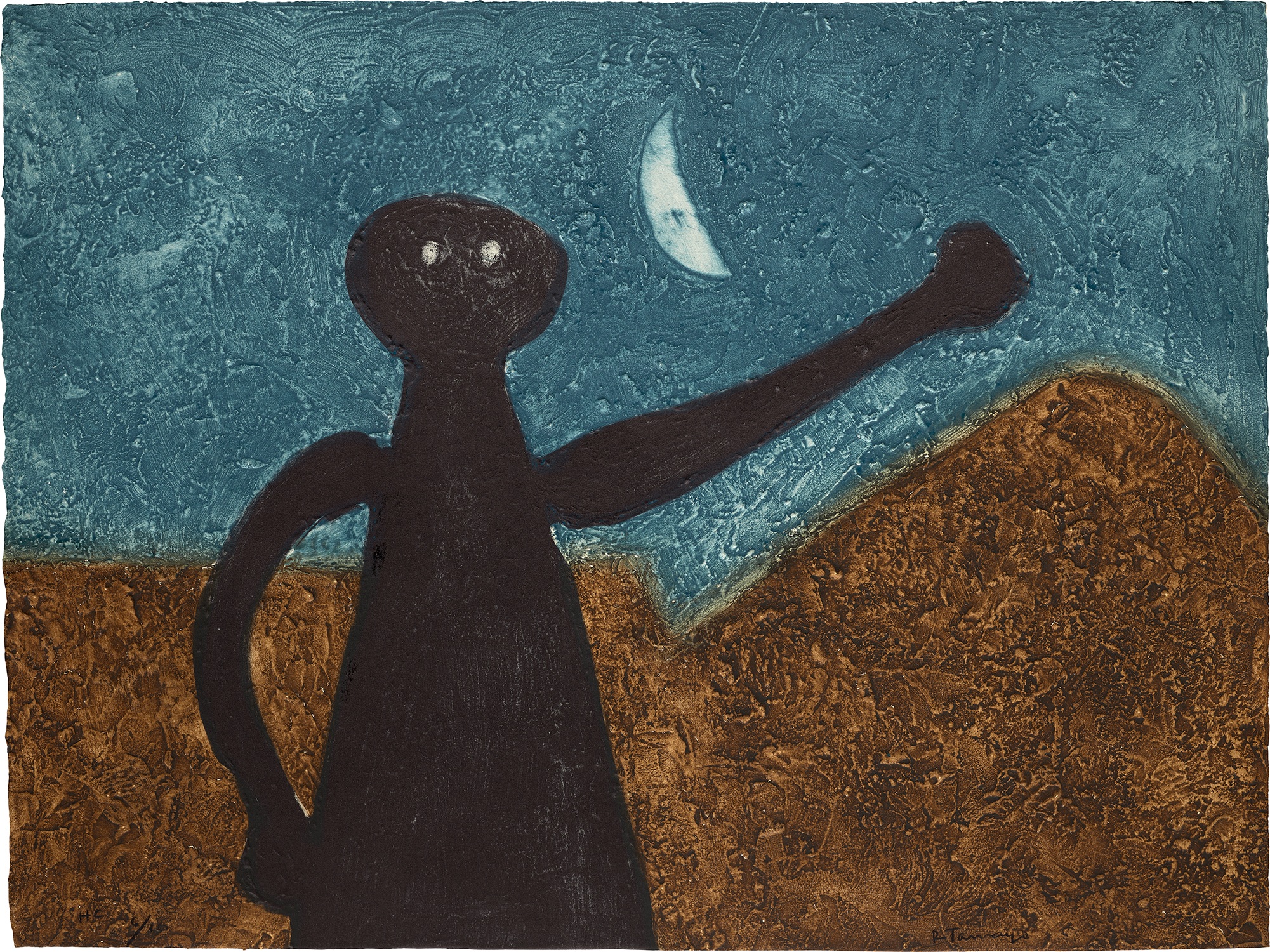
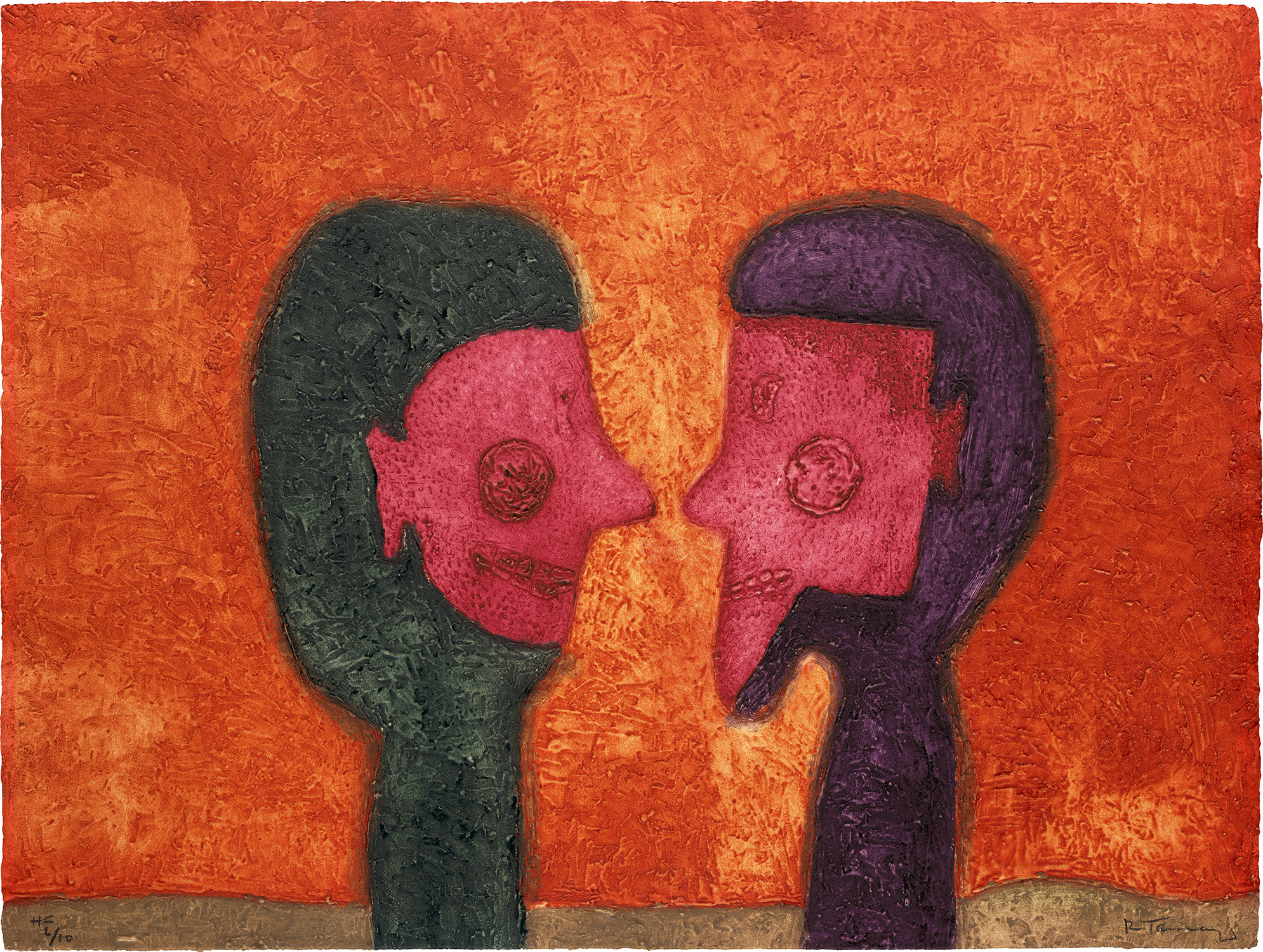














137
Rufino Tamayo
15 Aguafuertes (15 Etchings): 13 plates (P. 170-172, 174-181 & 183-184)
Further Details
Full-Cataloguing
Rufino Tamayo
Mexican | B. 1899 D. 1991Born in Oaxaca, Mexico, Rufino Tamayo was an incredibly prolific artist working until his death at the age of 91. Half-European and half-Zapotec Indian, Tamayo produced work that was defined by his mestizo, or mixed-blood, heritage. Through his studies, Tamayo was exposed to every artistic school of his time including Fauvism, the classical French school, Cubism and Abstract Expressionism, all of which contributed to his style as it developed throughout his life.
Tamayo reacted strongly against the Mexican muralists who dominated the art scene during his coming of age. Instead, his work is firmly grounded in realism while taking creative liberties in color and composition. His art emulates a unique blend of Cubism and Surrealism, joined with a deep understanding of Mexican culture.